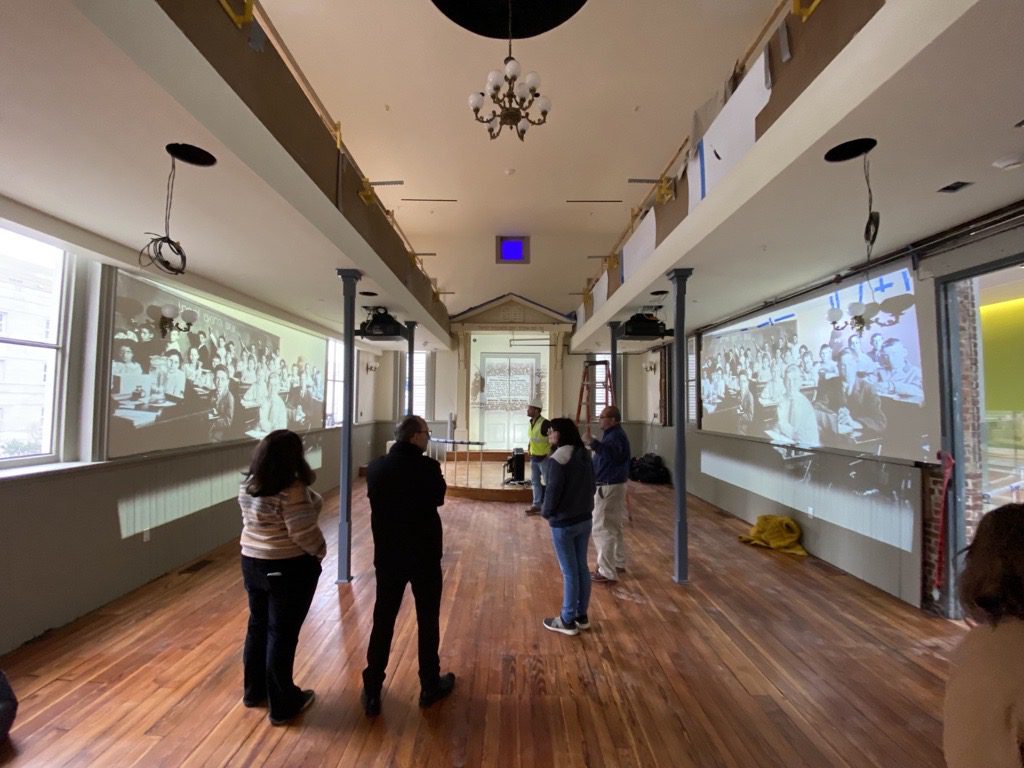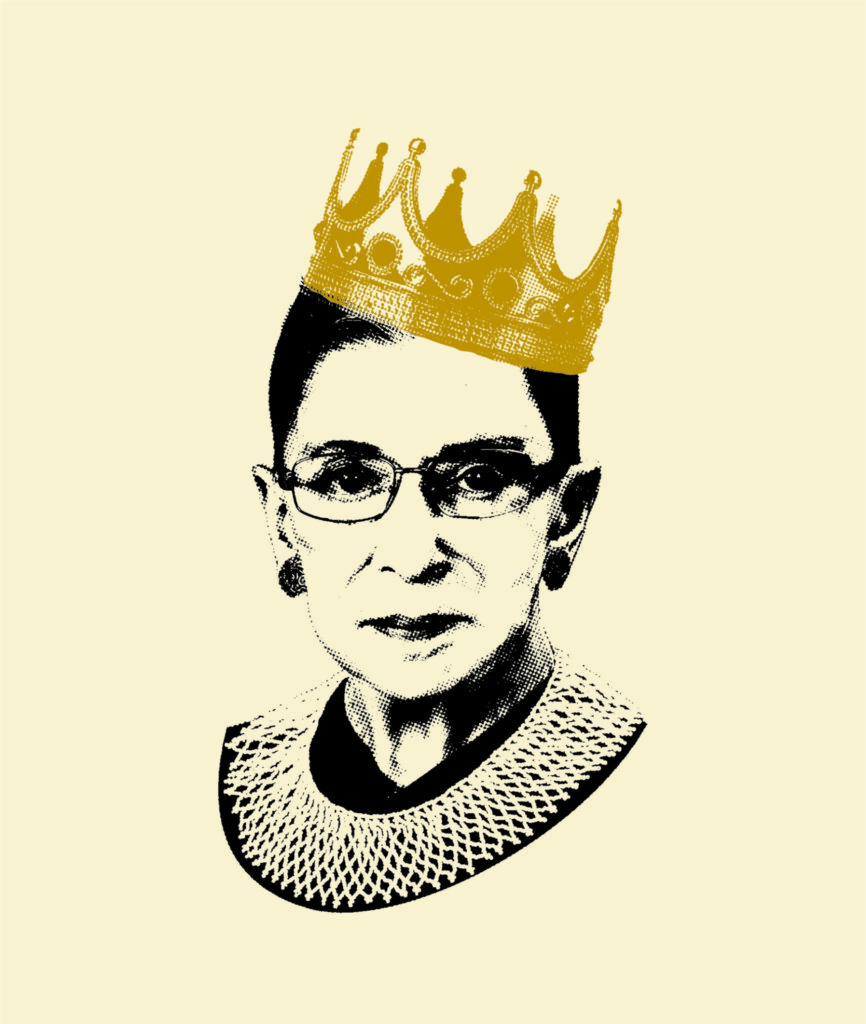Capital Jewish Museum Opens June 9
By • June 8, 2023 0 3452

Background on the Museum Building
The Lillian and Albert Small Capital Jewish Museum, opening June 9, at 575 3rd St NW, is not just the repository of Jewish life in the Washington region, but is itself a historical site in downtown D.C.
By way of introduction, the exhibit “What is Jewish Washington?” in the lower level of the synagogue, presents a grand timeline from the 1600s to contemporary life, interconnecting layers of American history with Jewish history in Greater Washington.
In the beautifully restored Adas Synagogue, one can sit on pews for a presentation of evocative sound, silhouetted images and historical maps and documents on the founding of the city’s first congregations — Washington Hebrew and Adas Israel, the latter being the first occupant of the Museum’s brick building. (Also in this gallery is a mid-19th century Torah used by the congregation.)
The Adas Israel Congregation — which began as 35 families, meeting for worship in homes — acquired the property at 6th and G Streets NW in 1870. Construction began in 1873. The historic synagogue, the heart of the museum, was dedicated with President Ulysses S. Grant in attendance on June 9, 1876, during the centennial of the United States.
The building was in continual use as a synagogue until 1907, when Adas Israel moved to larger quarters at 6th and I streets NW. The property was sold to Steven Gatti in 1905 and the building used by many shops as well as the Greek Orthodox Church of St. Sophia (now on Massachusetts Avenue) and also by the evangelical Church of God.
In 1969, the Jewish Historical Society acquired the historic synagogue and moved it for the first time, down the street to 3rd and G Streets NW. It was refurbished and dedicated in 1974. In 2016 and again in 2019, it was moved to 3rd and F Streets NW. The historic building is now incorporated into new construction as part of the the Lillian and Albert Small Capital Jewish Museum.

Exhibit spaces at the Capital Jewish Museum. Courtesy CJM.
Inaugural Exhibit: “Connect. Reflect. Act.”
Walking from the synagogue to the new wing of the museum on a crosswalk presents an overview of the atrium and sculpture by Zachary Oxman, ca. 2020. This installation of dynamic, intersecting tubes embodies the spirit of the Museum’s mission to “Connect, Reflect, and Act,” which is also the theme of the inaugural exhibition,
Interactive activities as well as a plethora of historical and contemporary photography fill the gallery. A giant interactive map table shows the growth and movement of the Jewish community over the decades and allows viewers to look up Jewish-owned businesses, synagogues, and organizations and locate them on the oversized map. A litany of personal and political items will engage the memory, such as a broadside — in Yiddish — encouraging people to enter themselves in the 1920 Census. Documents include restrictive covenants for suburban neighborhoods in the 1930s, to a notebook with handwritten comments the Supreme Court’s first Jewish justice Louis D. Brandeis. Articles that were part of political activism are on display including a fabric pennant carried at the 1963 March on Washington, political buttons representing all sorts of political views, and a guitar used for song-leading at the 2-decades long Vigil for Soviet Jewry at the Soviet embassy in Washington, D.C.
Notorious RBG: The Life and Times of Ruth Bader Ginsburg
“Notorious RBG: The Life and Times of Ruth Bader Ginsburg,” (through November 30, 2023 in the rotation Exhibition Gallery) is both a personal and political survey of the legendary justice’s life. Here, her life story is presented in three dimensions with everyday photographs and documents, furniture and clothing arranged in scenes. Her early life is re-imagined as a living room from her childhood Brooklyn apartment with a 1940s wall calendar, photograph of her mother, and old fashioned radio. In later years, a kitchen she and her husband Martin “Marty” shared includes items like his cooking whisk.

From the exhibit listing on “Notorious RBG.” Courtesy Capital Jewish Museum.
The highly personal collection of her school years and family scenes are the stuff of happy-ever-after storybook tales. However, even after a stellar career at Harvard Law School and Columbia University, Ginsburg still faced obstacles shared by American women in the work place — not having pregnancy coverage, lower pay and pension benefits.
The exhibit also explores the American legal system and Civil Rights movements further through the lens of the her role in public service through a series of wall texts outlining the major legal cases for which Ginsburg is noted.
In a pivotal moment in her mid life, Ginsburg would move from one side, before the bench, trying cases to behind the bench and interpreting the law when she was appointed by President Jimmy Carter to be a federal judge to the U.S. Court of Appeals for the District of Columbia Circuit in 1980. This would lead to more groundbreaking cases and to her appointment — as only the second woman, and the first Jewish woman — to the U.S. Supreme Court by President Clinton in 1993.
Law books along with personal items, her robe and jabot from her Supreme Court wardrobe, her souvenirs, her official portraits on the Supreme Court along with photos of her family rafting —are all part of her life’s story.
Viewing RBG through family photos set amidst her personal objects, reminds this writer of seeing her in person in places such as the Washington National Opera. For those of us in Washington, this exhibit now is a chance to remember our shared experience of a remarkable woman who saw and chose to work for what connects us all as citizens and women.
A terrace with a view of the placement of the museum within in the nation’s capital, is a fitting place to reflect at the end of the exhibits. But, what the orientation and galleries inspire in the presentation from the early history of many Jewish immigrants to the Federal City, through the 21st century does not end there. Community Action Lab workshops will provide families and school groups facilitated and free-form tinkering activities to examine Washington’s Jewish history, holiday-related arts and activities, and themes where inspiration can become action.
Admission to the Museum and core exhibitions is always free. The cost for special exhibitions, including “Notorious RBG: The Life and Times of Ruth Bader Ginsburg,” and programs varies. Members enjoy free admission to all exhibitions and discounts on programs.
Orientation exhibit, Adas Synagogue: What is Jewish Washington?
Inaugural Exhibit: “Connect. Reflect. Act.”
Notorious RBG: The Life and Times of Ruth Bader Ginsburg (through November 30, 2023).
For more information about the Capital Jewish Museum go to https://capitaljewishmuseum.org/.

